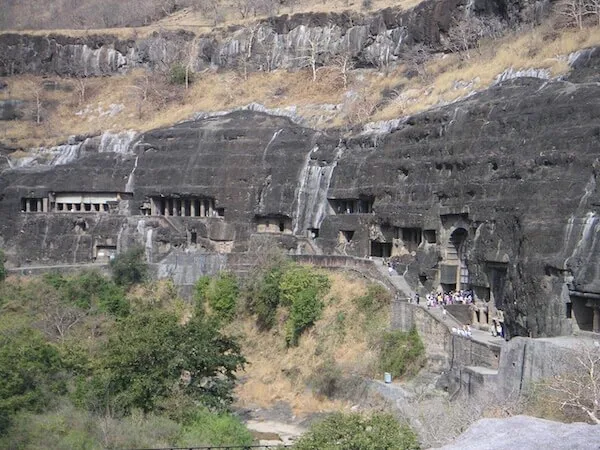Ajanta Caves
The Ajanta caves are situated in the state of Maharashtra. They are in the hills of the deccan. These caves were discovered only in the 19th century. They lie deep in the Sahyadri hills. Since they were in the jungles, the external world did not know about them before that. They are situated near the Waghora river. They were cut into a mountainside. Ajanta caves are rock - cut cave temples and monasteries of Buddhists. The caves were made between the 1st Century B.C. and the 7th century A.D. There are two kinds of caves - caityas (sanctuaries) and viharas (monasteries).
The Ajanta caves were made by Buddhist monks. In many caves, the walls are decorated with inscriptions and pictures. They represent stories from the Jatakas, a collection of stories related to the incarnations of Lord Buddha. Among these depictions of Buddhist stories we can also find the images of nymphs and princesses. They are very beautifully as well as artistically presented.
The caves are the best expression of human ideas and hard work. In Ajanta we have a string of 29 caves. Studies have proved that they were built as private hideaways of the Buddhist monks. They might have stayed there for various purposes like meditation, yoga or even safety. These caves were made at a period when they had only hammer and chisel as instruments of work. It shows how much determination and hard work they would have put behind it. The walls covered with artistic work speak of rich Indian culture and traditions.
The first cave is of great importance. It has some of the most famous as well as beautiful wall paintings. Some of them are Boddhisattvas, Padmapani and Avalokiteshvara. Wall paintings can also be found in caves 2, 16 and 17. However, the other caves are remarkable for their sculptures. Most of the sculptures are of divine nature.
Cave 17 contains one of the most outstanding sculptural works. The flying ‘apsara’ in this caves is really a beauty to be cherished. It also has the image of Lord Buddha preaching. They have really stood the test of time and have come to us as real pieces of ancient art. The Ajanta caves can give us a general view of the development and achievement of Buddhism. The caves and sculptures in them are carved in solid rock. Studies have proved that these caves were inhibited for many centuries.
These man made caves have become famous all over the world. However, we do not have enough information on what made the monks abandon these safe caves.

